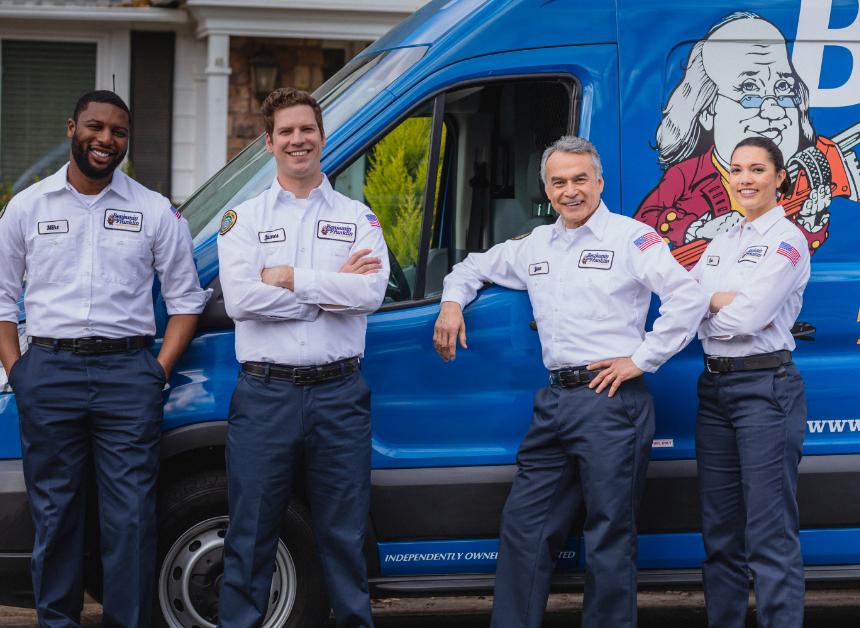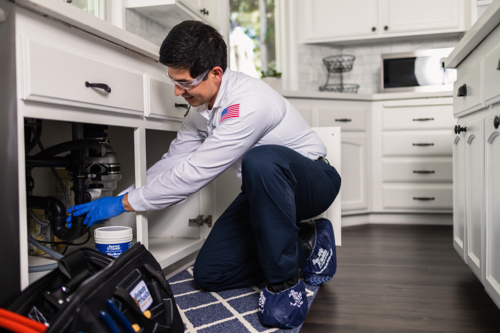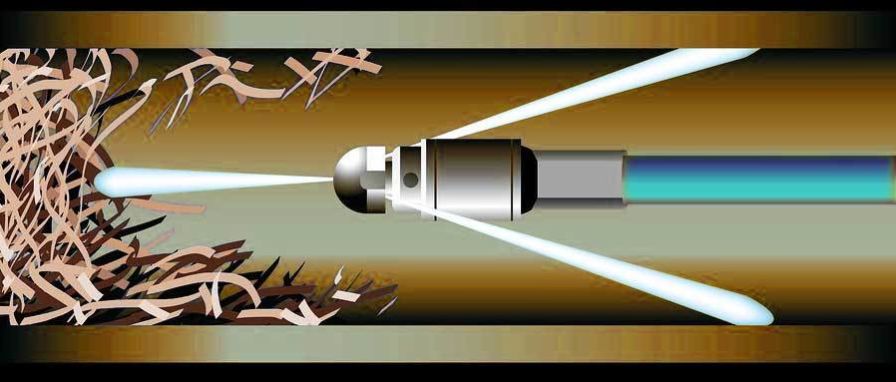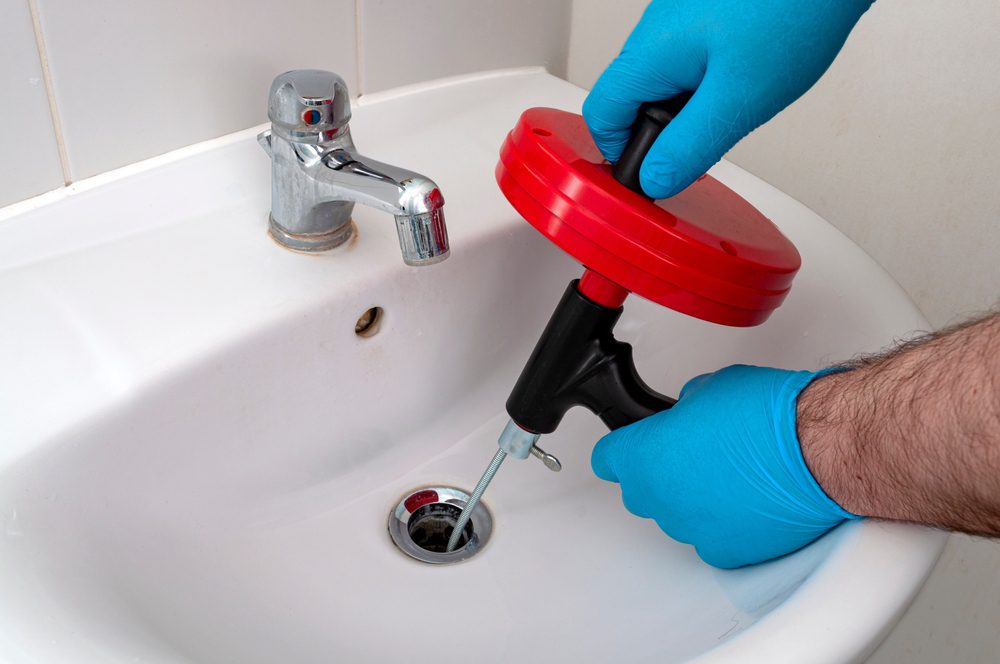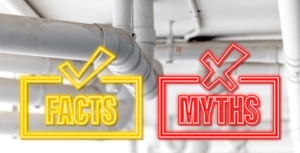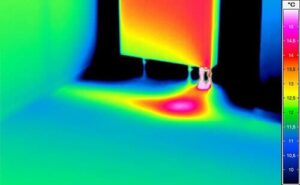What You Should Consider When Installing a New Shower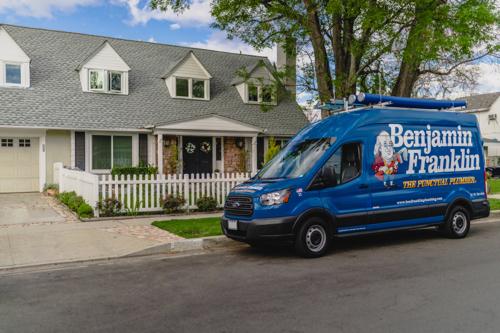
Many of today’s shower systems have options like multiple spray patterns and LED lighting. Some even come with aromatherapy features that leave you relaxed and refreshed after every rinse.
Regardless of your design preferences, it’s imperative to carefully plan the project and be wise with your budget. With strategic planning, you can design a shower space that works as the perfect oasis for your daily routine.
Here are 10 of the most important considerations to think about when doing a new shower installation.
1. Plan a Realistic Budget
Adding a new shower to your home can get quite expensive really fast, especially if you go with luxury materials. Planning a budget will ensure you prioritize the factors that matter most, like waterproofing and water efficiency. Your budget should cover labor, materials, demolition and permits. You may also need to plan for mold remediation if there’s existing water damage behind the walls, which also adds time to finishing the job. With a clear budget in hand, you’ll find it much easier to keep the project cost from spiraling out of control. Plus, it makes the shopping experience easier by narrowing your options.
2. Shower Size Along With the Existing Plumbing and Ventilation
The available space and layout will determine what size shower you can install. Remember, bigger isn’t always better. They cost more to install in materials and labor and also take up valuable square footage. Larger showers are most ideal when you have extra space or want multiple showerheads. They also work well when you plan to age in place and need more room for accessibility.
Your existing plumbing may impact what design or features you can include. For example, when the drain location has a fixed position, this means you must align the new shower base accordingly so the water drains properly. Both large and smaller showers can create a very luxurious bathing experience when planned properly. If you have a more flexible budget, we can do modifications to accommodate any shower setup you want.
3. Functionality of Curb vs Curbless Showers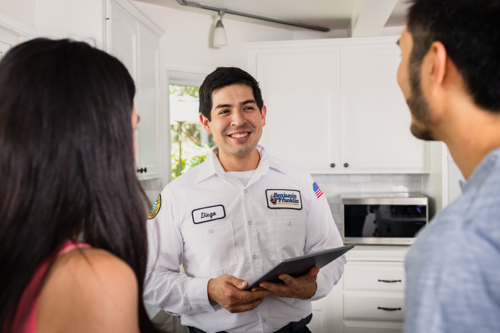
Curb showers have a small step at the base to keep the water from leaking out. You have to step in and out of them; however, some have an extremely low edge. Curbless showers fit flush with the floor, providing seamless access. They work great for aging-in-place designs. You’ll need to think about your family’s mobility needs and daily routines to pick the best option.
4. Tile Showers Enhance Style, Value and Durability
Tile showers offer enhanced durability and give you versatile design flexibility. Mosaic patterns create a vibrant, artistic ambiance that makes a bold statement. Subway tile delivers a more classic look. We often suggest large-format slabs when clients want to achieve a seamless, modern aesthetic.
5. Be Careful With Weatherproof Membrane and Base/Shower Pan
If the shower pan or base doesn’t have proper sealing, water will leak into the subfloor. This will result in major damage to the floor framing and insulation. The drywall might even absorb moisture, resulting in ugly stains all over the ceiling below. A high-quality waterproofing membrane will make a huge difference in preventing long-term water damage. If possible, you should use a pre-sloped shower pan, as this will help ensure you have a water-tight base.
6. Carefully Research Showerhead Options
Today’s showerheads have lots of features to choose from. Rainfall styles work by dispersing water evenly from above so you get a gentle, spa-like experience every time. Those with pressure-boosting technology come with flow regulators to provide strong, consistent pressure. When it comes to choosing the right finish, brushed nickel goes well with modern or transitional bathrooms, while oil-rubbed bronze blends better in rustic or traditional spaces. If you want an eco-friendly showerhead, make sure to pick one with WaterSense certification.
7. Don’t Forget About Accessories and Add-Ons For Your New Shower
Bench and built-in seat accessories will make your bathing experience more comfortable and practical. You can sit down on a heated seat when shaving or a fold-down chair to rinse hard-to-reach areas. Other useful accessories include storage niches for soaps and footrests for added stability. Grab bars are an especially helpful addition for safety. You can even add waterproof lighting to ensure clear visibility when showering.
8. Placement of Valves
The placement of the hot and cold water valves impacts the overall functionality of the shower. Those placed near the entrance let you easily turn water on and off without getting wet. If visual symmetry is more of a priority, you might want to place the valves centered under the showerhead. You’ll just need to make sure you can reach them comfortably without stepping into the water stream.
9. The Great Door Debate
The door to the shower affects everything from aesthetics to accessibility to maintenance. Sliding doors can save a lot of space but are usually much harder to clean. Swinging glass doors require a lot of space but make the area feel more elegant. Doorless entries require precise drainage and splash control and offer a modern, open look. You’ll have to think about the layout and your daily habits to pick the best door style. We find a lot of customers opting for frameless glass doors. These types provide a sleek, uninterrupted look without the bulky framing that can collect grime.
10. Showerhead Placement Matters
Where you place the showerhead influences water containment and comfort. You might think directly across from the entrance is the best spot to put one, but this can lead to water splashing out of the shower. Placement along an open edge is another bad spot because it’ll create constant puddles.
Overhead rain showerheads should always be centered and positioned above where you stand. Angled wall-mounted options should be high enough to accommodate taller users so they don’t need to crouch. When installing multiple showerheads, make sure they don’t spray directly onto doors or walls. You can test spray angles to see which settings work best. When you need help with a new shower installation, call Benjamin Franklin Plumbing. If there’s any delay, it’s YOU we pay.

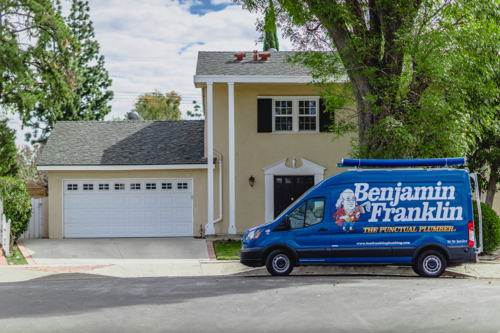


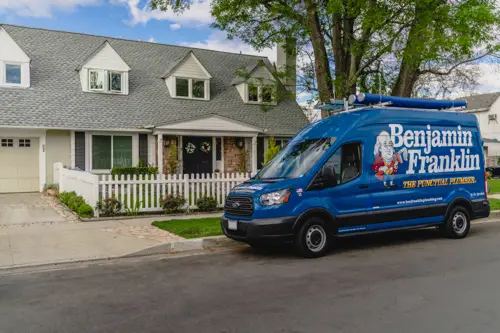
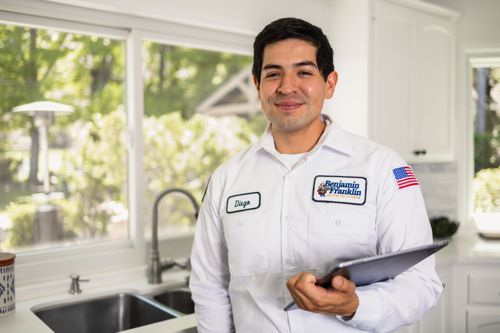


 When you’re about to take a shower or do a load of dishes in your Pompano Beach, FL, home, it’s natural to wonder, “How can I tell how old my water heater is?” Responsible homeowners want to determine the age of their water heater so they can plan maintenance or know when it’s time to replace the unit.
When you’re about to take a shower or do a load of dishes in your Pompano Beach, FL, home, it’s natural to wonder, “How can I tell how old my water heater is?” Responsible homeowners want to determine the age of their water heater so they can plan maintenance or know when it’s time to replace the unit.